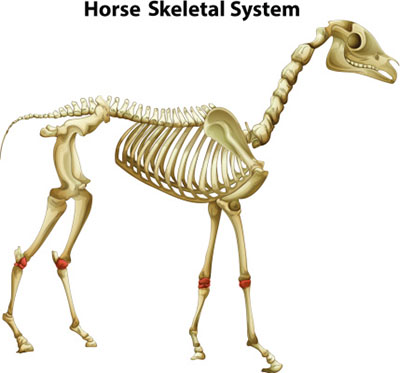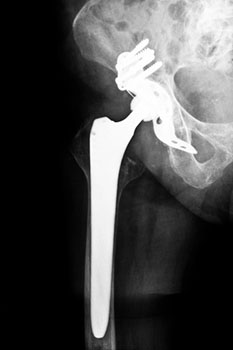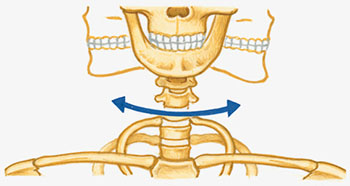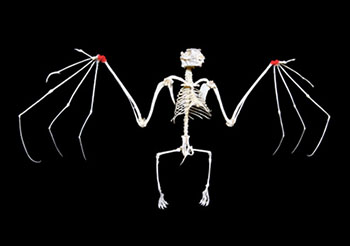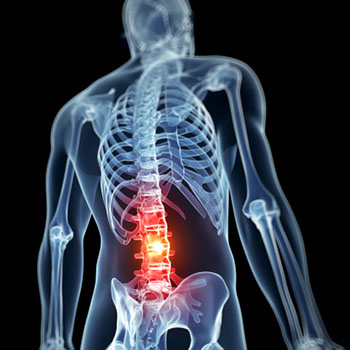None of the bones in the body would be very helpful for creating movement if it were not for the body's joints. A joint is the place in the skeleton where two bones meet. Click through the slideshow to compare the different types of joints in a vertebrate and how they help us, and other animals, move.
Hinge Joint
A hinge joint works just like a hinge on a door to allow bones to move back and forth. Hinge joints are found at the elbows, knees (shown in red on this horse skeleton), and knuckles. Ball-and-Socket Joint
A ball-and-socket joint looks exactly like it sounds, like a ball in a concave space. These joints allow bones to move in a circular way. They are found between the femur and pelvis, as shown in this human pelvis, as well as in the shoulder. Pivot Joint
A pivot joint allows back-and-forth motion around a fixed point. The best known example of this kind of joint is the neck in humans, as shown, as well as in other animals. Swivel Joint
A swivel joint allows a twisting motion. Swivel joints are found in the wrist and forearm, as well as in the ankle and knee. You can see swivel joints in this bat skeleton's wrists (in red), though they look a little different from yours. Gliding Joint
A gliding joint simply allows two bones to move smoothly (glide) over one another. Gliding joints are found, for example, between vertebrae in the human spinal column. |
All joints are found where two or more bones meet, and many joints help us to move around. How well do you know the types of joints in the vertebrate body? Connect each joint type on the left with its definition on the right.
|
Pivot
Swivel
Hinge
Ball and Socket
Gliding
|
allows bones to move smoothly over one another
allows for twisting movement
allows for movement around a fixed point
allows for back and forth movement
allows for circular movement
|
Try again.
